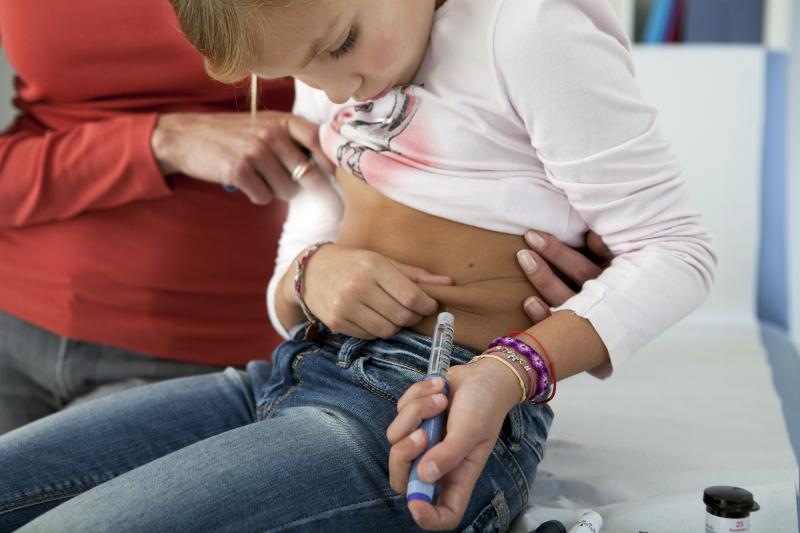
Children with type 1 diabetes spend most of the day outside the target glucose range, according to a new study.
The study included 143 participants (median age, 5.9 years; 50 percent girls) who were given masked continuous glucose monitoring (CGM) devices that did not display glucose measurements. The children were asked to wear the sensor for 14–21 days. Whole blood samples were collected after CGM data collection for the assessment of glycated haemoglobin (HbA1c) concentrations.
Researchers found that participants spent less than half of the day (40 percent; 9.6 hours per day) within the target glucose range of 3.9–10.0 mmol/L. Each child contributed a mean of 305 masked CGM hours over the course of the study. [Diabet Med 2020;doi:10.1111/dme.14276]
On the other hand, most of the day (55 percent; 13.1 hours per day) was spent in hyperglycaemia, with glucose levels >10.0 mmol/L. A further majority of this (30 percent of the day overall; 7.3 hours per day) was spent with glucose levels exceeding 13.9 mmol/L.
Similarly, participants also spent 40 percent of the time within the target glucose range during both daytime and nighttime. Those with parents who had lower educational attainments spent even less time within the target range (p=0.02 for daytime and nighttime). Time in range was shorter for younger participants during the day (p=0.021) and longer for those belonging to minorities during the night (p=0.031).
The rest of the day (4.1 percent; 59 minutes per day) was spent in hypoglycaemia, with glucose levels below 3.9 mmol/L. A further 20 minutes per day (1.4 percent of the time) was spent below 3.0 mmol/L. Time spent below the lower threshold was 1.1 percent during the day and 1.4 percent during nighttime. Those who were younger at diagnosis spent even more time below target range during both daytime (p=0.002) and nighttime (p=0.03).
Glucose variability was high, with a mean coefficient of variation value of 44±7 percent. Mean HbA1c level was 66±8 mmol/mol and was significantly higher among those whose parents had lower education (71 vs 65 mmol/mol; p=0.018).
“Intensive insulin therapy in children requires a complex orchestration of insulin dosing and diet while accounting for other variables such as physical activity and illness, which may help explain why the overwhelming majority of children with type 1 diabetes currently have suboptimal glycaemic control,” said researchers.
This is compounded by the relative underutilization of new technologies―such as insulin pumps, CGM devices and automated insulin delivery systems―in this age group. [Diabetes Technol Ther 2019;21:66-72; Diabetes Care 2013;36:2035-2037]
“Given that both hypo- and hyperglycaemia may negatively impact cognitive development in young children, further research and development of clinical strategies to successfully incorporate and sustain optimal use of new technologies that are readily employable by families and care providers are urgently needed,” the researchers added.